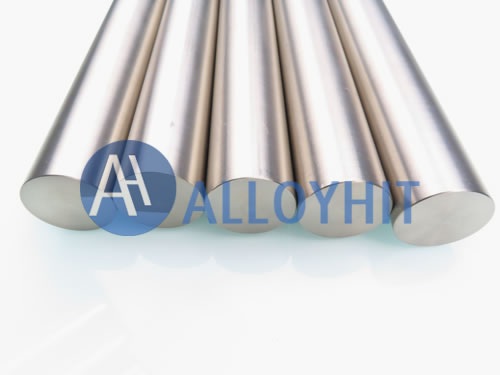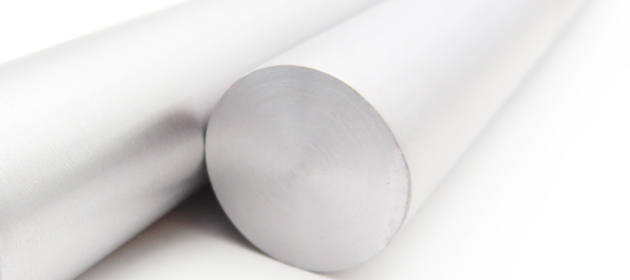
C103 Tube, Rod, Wire
C103 has Tubes, Rods, Wires and other shapes, which can be processed by extrusion, forging, rolling and drawing. It is usually supplied in the recrystallization annealing state, stress relief annealing state and cold working state.
Product Specifications of Niobium C103 Rod & Bar
Our niobium C103 bars are available in a range of standard sizes and can be custom manufactured to meet your specific requirements.
| Standard Range | Custom Options | Tolerance |
| 0.25" - 6.0" (6.35mm - 152.4mm) | from 0.04" (1.016mm ) | ±0.0005" (±0.0127mm) for precision grades |
| 12" - 120" (304.8mm - 3048mm) | Up to 240" (6096mm) or custom cut lengths | ±0.125" (±3.18mm) |
| Nb-10Hf-1Ti (Niobium with 10% Hafnium, 1% Titanium) | ±0.5% for major elements | |
| Hot rolled, Cold drawn, Ground | Polished (up to 16 µin Ra) | - |
| Round bars, Square bars, Rectangular bars | Hexagonal, Forged blanks, Custom profiles | - |
| Recrystallized, Partially recrystallized | Custom grain size control available | ASTM B655 (standard) |
Available Customizations of Niobium C103 Rod & Bar

Material Processing
Precision machining to exact dimensions and tolerances
Custom heat treatment for specific mechanical properties
Surface treatments including diffusion coatings
Ultrasonic testing and flaw detection

Documentation & Testing
Full material certification and traceability
Mechanical testing (tensile, hardness, impact)
Chemical analysis (spectroscopy, wet chemistry)
Compliance documentation for aerospace and nuclear applications
Key Advantage: Dimensional Stability
Niobium C103 Rod & Bars maintain exceptional dimensional stability even under thermal cycling, with minimal distortion compared to other high-temperature alloys. This makes them ideal for precision components where tight tolerances must be maintained in service.
Why Choose Our Niobium C103 Rod & Bar?
-
✔
Precision ground to tight tolerances (±0.0005") for critical applications
-
✔
Vacuum melted and processed for exceptional purity and consistency
-
✔
Comprehensive testing and certification with full traceability
-
✔
Custom sizes and configurations available to meet specific requirements
-
✔
Global shipping with expert handling and export documentation

Precision Manufacturing Process of Niobium C103 Rod & Bar
Our Niobium C103 Rod & Bar undergo a rigorous manufacturing process to ensure the highest quality and performance standards.
1. Alloy Preparation
High-purity niobium, hafnium, and titanium are precisely measured and blended according to the C103 specification (Nb-10Hf-1Ti) to ensure exact chemical composition.
2. Vacuum Arc Melting
The alloy is melted in a high-vacuum environment to eliminate gas impurities and ensure homogeneous composition, creating a uniform ingot structure.
3. Hot Forging
The ingot is heated to precise temperatures and forged to reduce cross-section, refine grain structure, and improve mechanical properties.
4. Cold Working & Annealing
Precision cold rolling or drawing achieves final dimensions with tight tolerances, followed by vacuum annealing to optimize mechanical properties.
5. Finishing & Inspection
Final grinding and polishing to achieve required surface finish, followed by comprehensive testing to ensure dimensional accuracy and material integrity.
Processing technology of C103 Rod/Bar
C103 has good plasticity and can be deformed by stamping, rolling, drawing, spinning, and bending at room temperature. The total processing rate between two annealings can reach 95%, and the processing rate of passes is 10%-50%. When the temperature rises, C103 is easy to oxidize in the air and cannot be thermally processed (such as forging, extrusion, etc.) in an unprotected state. It must be coated with an anti-oxidation coating, or in a vacuum state or in an inert gas (generally argon). ) Under protection.
Recrystallization annealing specification
C103 will absorb gas and other impurities from the environment at high temperature, causing pollution. The heat treatment should be carried out in a vacuum (vacuum ≤5×10^(-2)Pa) or under the protection of inert gas.
C103’s recrystallization annealing specification is generally:
In the vacuum state, C103 is heated to 1150-1450°C with the furnace and kept for 1-2 hours. After power-off, the temperature is cooled to no more than 60°C with the furnace before being released.
Machining performance of C103 Rod/Bar
At room temperature, C103 pipe, rod and wire can be processed by turning, milling, planing, cutting, drilling, grinding and other mechanical processing.
Welding performance of C103 Rod/Bar
C103 pipe rods and wires must be welded in an inert gas (generally argon) environment or in a vacuum state. Generally, no external welding rod is added when welding the welded pipe.
International Standards Compliance of Niobium Rod & Bar
Our Niobium C103 Rod & Bar meet or exceed the most stringent international standards, ensuring global acceptance and reliability.

Certifications & Specifications
-
ASTM B655
Standard specification for niobium and niobium alloy rod and wire, ensuring consistent quality and performance.
-
Other Compliance
ISO 9001 quality management and complete material traceability.
Quality Assurance
We are committed to providing the highest quality C103 Rod products and have established a comprehensive quality control system.
Material Testing
Comprehensive chemical analysis, mechanical testing, and non-destructive evaluation ensure material integrity.
Process Control
Strict process controls and continuous monitoring ensure consistent quality across all production batches.
Documentation
Complete certification packages including material test reports, traceability records, and compliance documentation.
Contact Us
If you have any questions or needs regarding Niobium C-103 Rod products, please feel free to contact us and we will provide you with professional consulting services.

 +86 13120915623
+86 13120915623


